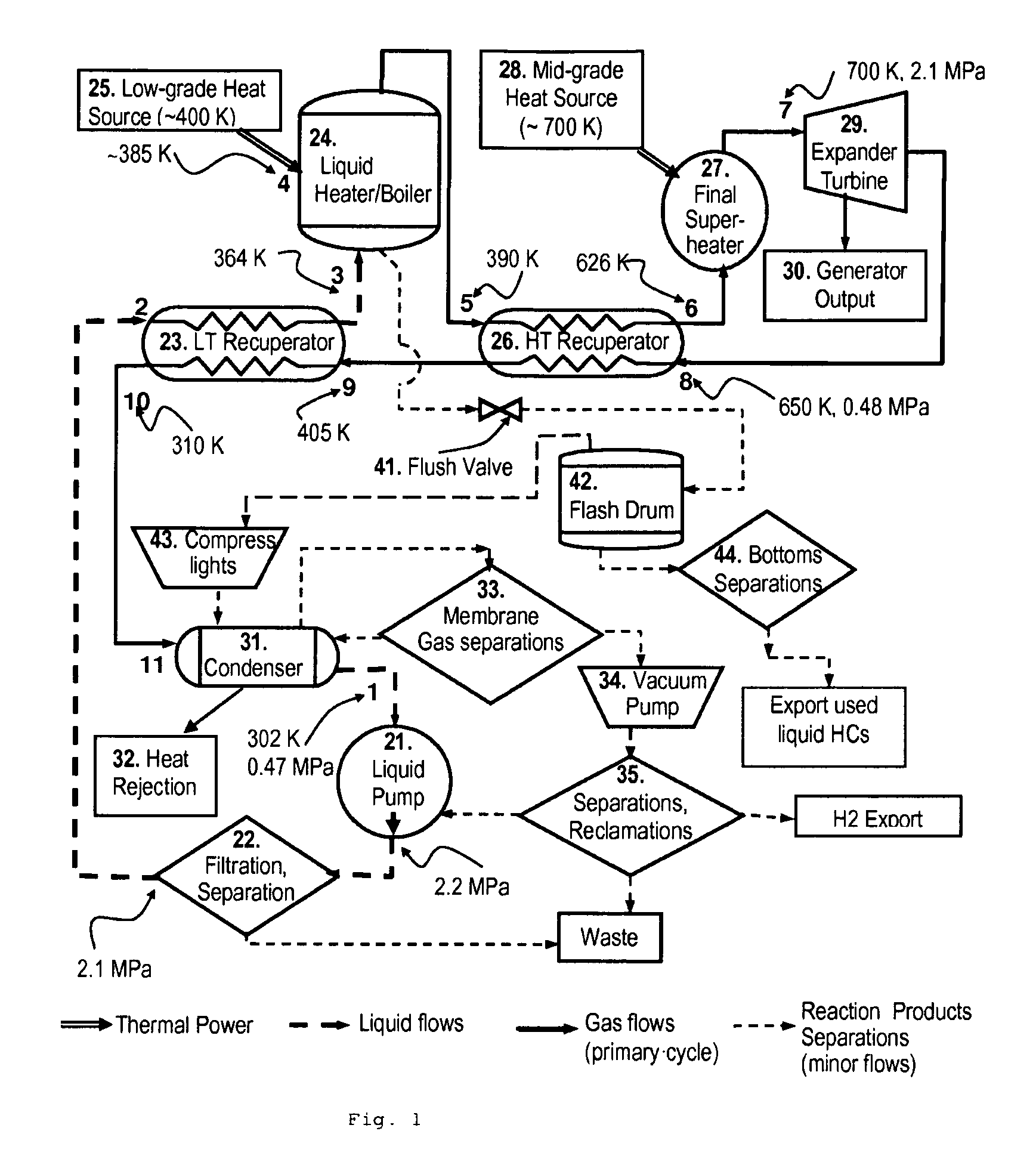High-temperature dual-source organic Rankine cycle with gas separations
a rankine turbine and gas separation technology, applied in the direction of machines/engines, lighting and heating apparatus, transportation and packaging, etc., can solve the problems of unavoidable air and moisture infiltration, cost is an order of magnitude beyond what is needed to be economically viable, and the useable temperature range of the exemplary fluid is dramatically increased, minimizing the fraction of time the fluid spends
- Summary
- Abstract
- Description
- Claims
- Application Information
AI Technical Summary
Benefits of technology
Problems solved by technology
Method used
Image
Examples
Embodiment Construction
[0032]Fluid Chemistry Stabilization. Chemical stability is ultimately the limiting factor for DORC performance, at least when the higher-grade heat source is concentrated solar. Butanes have previously not been recommended for use above about 480 K, partly because it is assumed there may be some moist air ingress, leading to formation of organic acids and other oxygenates (the combination of copper and water very strongly catalyzes oxidation of alkanes). Heavier alkanes have often been mistakenly thought to be better suited for higher temperatures, as this trend is often seen in engine oils in oxidative environments. With no air ingress, the focus of the chemical stability problem is changed.
[0033]Table 1 lists some properties of the preferred working fluid constituents as well as a few primary reaction products and some high-boiling organics that are preferable to some fluids previously used as the heat transfer fluid from the HT solar field to the DORC. The other popular ORC worki...
PUM
 Login to View More
Login to View More Abstract
Description
Claims
Application Information
 Login to View More
Login to View More - R&D
- Intellectual Property
- Life Sciences
- Materials
- Tech Scout
- Unparalleled Data Quality
- Higher Quality Content
- 60% Fewer Hallucinations
Browse by: Latest US Patents, China's latest patents, Technical Efficacy Thesaurus, Application Domain, Technology Topic, Popular Technical Reports.
© 2025 PatSnap. All rights reserved.Legal|Privacy policy|Modern Slavery Act Transparency Statement|Sitemap|About US| Contact US: help@patsnap.com



